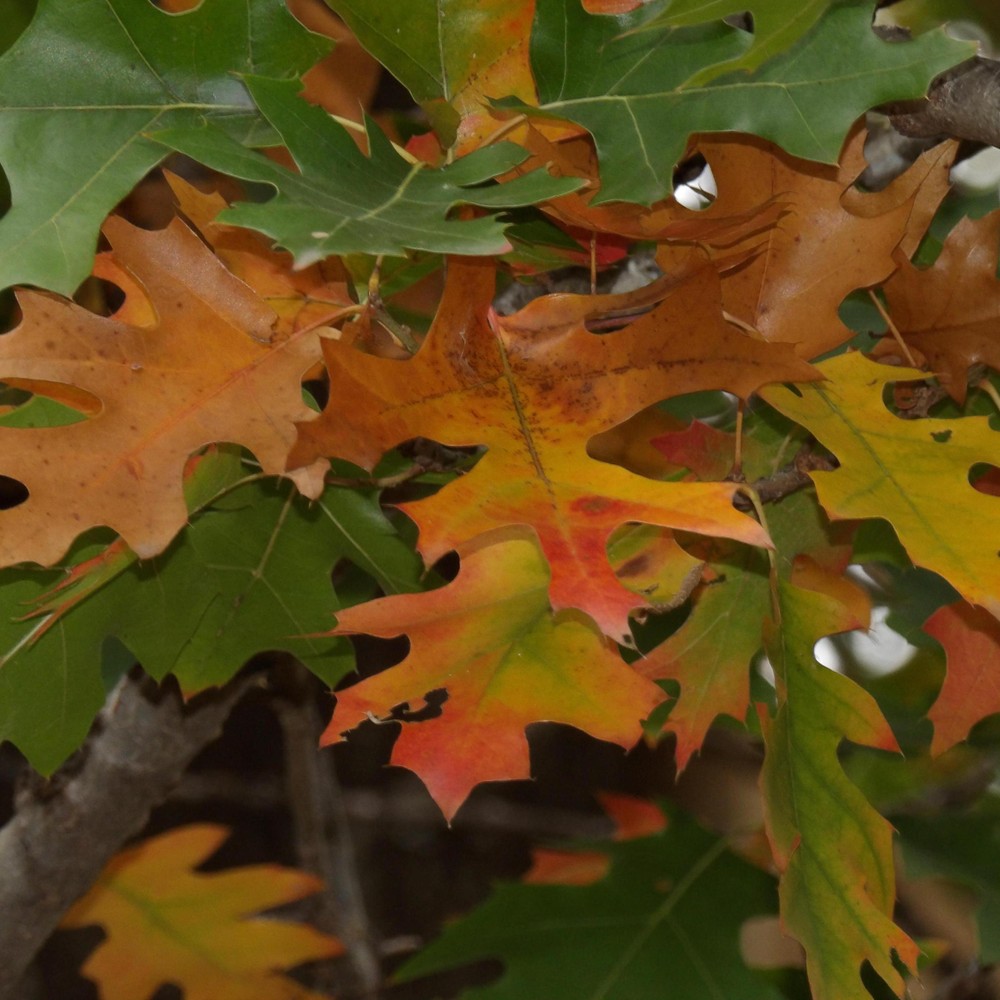Texas red oak
(Quercus buckleyi)

Description
Quercus buckleyi, commonly known as Texas red oak or Buckley's oak, is a species of flowering plant in the beech family. It is endemic to the southern Great Plains of the United States (Oklahoma and Texas). Buckley's oak is smaller and more likely to be multitrunked than its close relative, the Shumard oak (Quercus shumardii). The two species are interfertile, and hybrids are common along a line from Dallas to San Antonio, Texas. Texas red oak usually is 30 to 50 ft (9 to 15 m) tall at maturity, and seldom reaches a height of more than 75 ft (23 m). Quercus buckleyi was formerly known as Q. texana, but under botanical rules of priority, that name properly refers to Nuttall's oak. This has led to much confusion. It is a highly regarded ornamental and shade tree. In autumn, the leaves turn vivid red and orange. An oak is a tree or shrub in the genus Quercus ("oak tree") of the beech family, Fagaceae. There are approximately 500 extant species of oaks. The common name "oak" also appears in the names of species in related genera, notably Lithocarpus (stone oaks), as well as in those of unrelated species such as Grevillea robusta (silky oaks) and the Casuarinaceae (she-oaks). The genus Quercus is native to the Northern Hemisphere, and includes deciduous and evergreen species extending from cool temperate to tropical latitudes in the Americas, Asia, Europe, and North Africa. North America has the largest number of oak species, with approximately 160 species in Mexico of which 109 are endemic and about 90 in the United States. The second greatest area of oak diversity is China, with approximately 100 species. Oaks have spirally arranged leaves, with lobate margins in many species; some have serrated leaves or entire leaves with smooth margins. Many deciduous species are marcescent, not dropping dead leaves until spring. In spring, a single oak tree produces both male flowers (in the form of catkins) and small female flowers, meaning that the trees are monoecious. The fruit is a nut called an acorn or oak nut borne in a cup-like structure known as a cupule; each acorn contains one seed (rarely two or three) and takes 6–18 months to mature, depending on their species. The acorns and leaves contain tannic acid, which helps to guard from fungi and insects. The live oaks are distinguished for being evergreen, but are not actually a distinct group and instead are dispersed across the genus.
Taxonomic tree:







